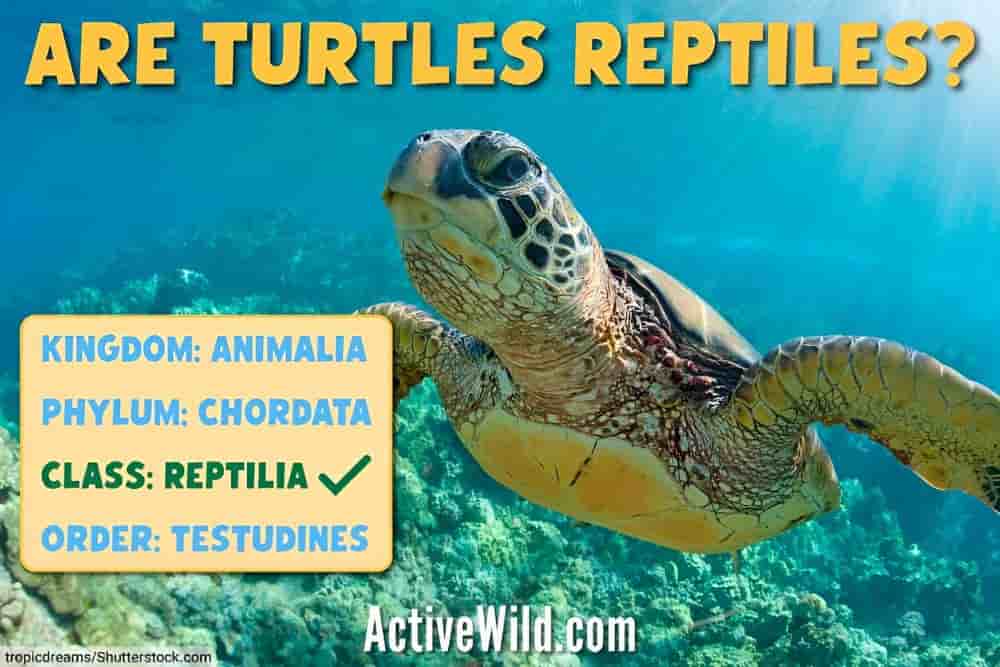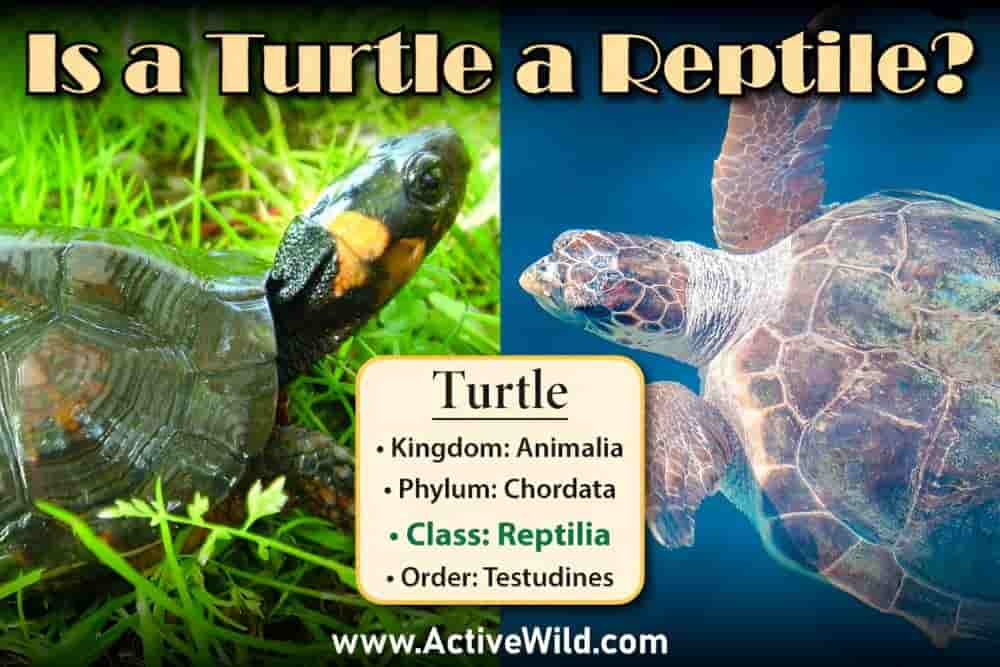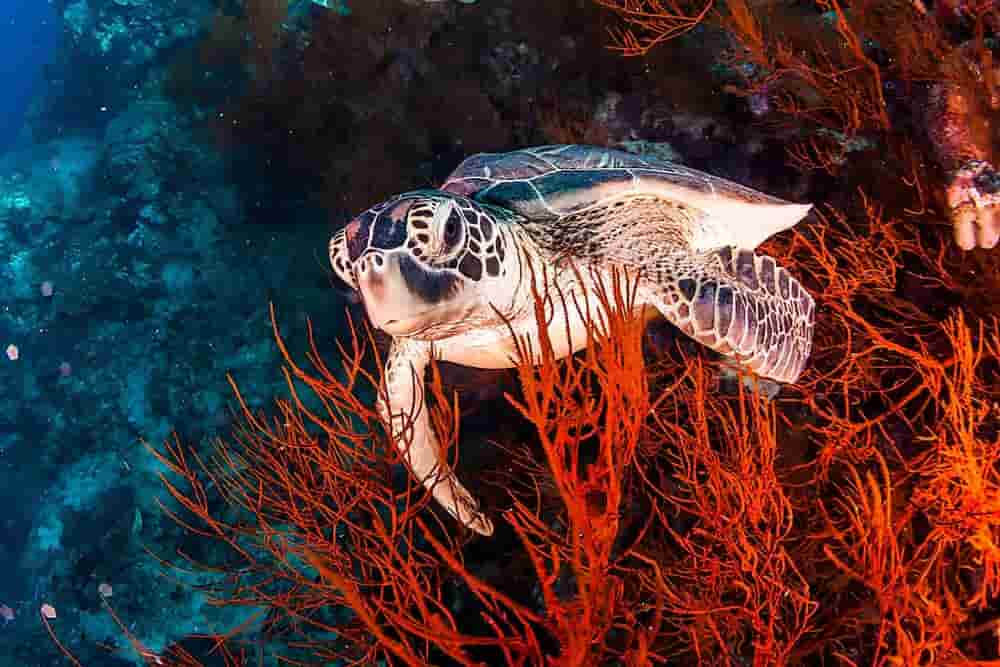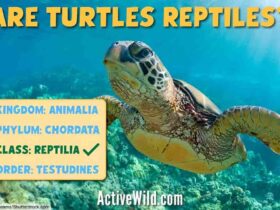Is a Turtle an Amphibian? Turtles, with their iconic shells and graceful movements, are captivating creatures that bridge both water and land ecosystems. Seeing a turtle swimming underwater or basking on a sunny shore has led many people to assume they are amphibians, animals living in water and on land. While it’s true that turtles share certain habits with amphibians, such as relying on aquatic and terrestrial environments, they belong to a separate class of animals: reptiles. Understanding why turtles are reptiles rather than amphibians provides insight into their unique adaptations, evolutionary history, and role in ecosystems.
Is a Turtle an Amphibian? This article delves into the key characteristics that define turtles as reptiles, explores the differences between reptiles and amphibians, and highlights the unique adaptations that have enabled turtles to thrive across diverse habitats for millions of years. By the end, readers will have a comprehensive understanding of turtle classification and the distinct qualities that make them unique among reptiles.
What Defines a Reptile?

Defining the characteristics that distinguish them from other animal groups is essential to understanding why turtles are classified as reptiles. Reptiles are members of the class Reptilia, a group that includes lizards, snakes, crocodilians, and turtles. The main characteristics that define reptiles are:
- Ectothermic (Cold-Blooded): Reptiles are ectothermic, meaning they rely on external heat sources to regulate their body temperature.
- Scaly Skin: Reptiles have dry, scaly skin that helps reduce water loss and provides protection. This trait is essential for reptiles living in arid environments.
- Lungs for Breathing: All reptiles, including turtles, have lungs for breathing and do not rely on gills for oxygen intake, unlike fish.
- Amniotic Eggs: Reptiles lay amniotic eggs, which have a protective shell and membrane and can be laid on land. This trait distinguishes them from amphibians, which typically lay eggs in water.
These characteristics are foundational to understanding why turtles are classified as reptiles rather than amphibians.
What Defines an Amphibian?
Is a Turtle an Amphibian? To further clarify the classification, let’s examine the characteristics of amphibiansAmphibians are members of the class Amphibia, which encompasses frogs, toads, salamanders, and newts. What makes amphibians distinctive is their life cycle, which includes both aquatic and terrestrial stages. Their main characteristics include:
- Dual Life Cycle: Most amphibians go through an aquatic larval stage (such as tadpoles in frogs) before transforming into adults that live partially or entirely on land.
- Moist Skin: Amphibians have permeable skin that directly absorbs water and oxygen. This characteristic limits most amphibians to wet environments.
- Gills in Larval Stage: Amphibians typically have gills in their larval stage, which are then replaced by lungs in adulthood.
- External Fertilization: Amphibians usually reproduce through external fertilization, laying eggs in water. Their eggs lack the protective shell seen in reptiles, making them reliant on moist environments to prevent drying out.
These defining characteristics of amphibians make it clear that turtles differ significantly in terms of biological traits and reproductive methods despite their association with water.
Why Turtles Are Classified as Reptiles
With the characteristics of reptiles and amphibians clarified, it’s easier to understand why turtles are classified as reptiles. Here are the key reasons:
- Lungs for Breathing Air
Unlike amphibians, turtles have lungs from the moment they hatch and rely on them throughout life. They cannot breathe through their skin or gills and must surface to breathe, even if they spend much of their time in the water. This trait aligns them more closely with reptiles than amphibians.
- Scaly Skin and Hard Shell
Turtles are covered in scales, a defining characteristic of reptiles. Additionally, they have a unique adaptation: a hard shell, which provides protection and aids in thermoregulation. The shell, formed from modified ribs and vertebrae, is covered with scutes—tough plates made of keratin, the same substance found in human nails and hair. This protective, scaly exterior sets turtles apart from amphibians’ moist, permeable skin.
- Amniotic Eggs with a Hard Shell
Turtles lay amniotic eggs, surrounded by a protective shell that allows them to be laid on land. These eggs have a membrane known as the amnion, which creates a moist environment for the embryo to develop. Is a Turtle an Amphibian? Unlike amphibians, which lay their eggs in water, turtles lay their eggs on land, making them less dependent on aquatic environments for reproduction.
- Ectothermic Metabolism
Turtles are ectothermic, meaning their body temperature is controlled by the surrounding environment. While amphibians are also ectothermic, reptiles have evolved more efficient methods of thermoregulation, allowing them to survive in a broader range of environments. Turtles, for instance, bask in the sun to raise their body temperature and retreat to cool water or shade to lower it.
- Longer Life Cycle with No Metamorphosis
Unlike amphibians, which undergo a metamorphic life cycle, turtles develop directly into miniature versions of adults after hatching. They do not go through a larval stage like tadpoles, which distinguishes them from amphibians.
Unique Adaptations of Turtles Among Reptiles
Turtles are indeed reptiles, but they possess unique adaptations that make them distinct within the reptile class. Here’s what sets turtles apart:
- Protective Shell Structure: The shell is an exceptional feature that protects against predators and aids in thermoregulation. Few other reptiles have such an intricate body armor.
- Aquatic and Terrestrial Diversity: Turtles have adapted to a wide range of habitats, from the open ocean and freshwater rivers to deserts and forests. This diversity is rare in other reptile groups, which tend to specialize in specific environments.
- Breath-Holding Abilities: Aquatic turtles can hold their breath for extended periods, and some have adaptations that allow them to absorb small amounts of oxygen through cloacal respiration while resting underwater. Is a Turtle an Amphibian? This enables them to stay submerged for hours, a skill not commonly found among other reptiles.
Critical Differences Between Turtles and Amphibians

Is a Turtle an Amphibian? The classification of turtles as reptiles rather than amphibians is underscored by crucial differences in their biology and life cycle:
- Respiratory System: Turtles rely entirely on lungs, while amphibians often have a dual respiratory system involving both lungs and gills.
- Skin Structure: Turtles’ scaly, dry skin contrasts sharply with the moist, permeable skin of amphibians, limiting them to damp habitats.
- Reproduction and Egg Structure: Turtles lay amniotic eggs with a protective shell, enabling them to lay eggs on land. Amphibians typically lay jelly-like eggs in water, which require moisture to survive.
- Metamorphosis vs. Direct Development: Unlike amphibians, which undergo metamorphosis, turtles develop directly from hatchling to adult form without a larval stage.
Is a Turtle an Amphibian? Types of Turtles and Their Habitats
Is a Turtle an Amphibian? While turtles are reptiles, they have diversified into various habitats, showing remarkable adaptability:
- Sea turtles: including species like the green and loggerhead turtles, are fully marine and uniquely suited to life in the ocean.They spend most of their lives in saltwater, coming ashore only to lay eggs.
- Freshwater Turtles: Freshwater turtles, like the painted turtle and red-eared slider, live in rivers, ponds, and lakes. These semi-aquatic turtles rely on water and land for different activities.
- Tortoises: Tortoises are fully terrestrial turtles adapted for life on land. They are commonly found in dry and semi-dry regions. They possess thick, sturdy legs and dome-shaped shells that protect them in terrestrial environments.
Is a Turtle an Amphibian? This diversity showcases the wide-ranging adaptability of turtles within the reptile class, highlighting their resilience across different ecosystems.
Common Misconceptions About Turtles and Amphibians

Several misconceptions contribute to the confusion surrounding turtle classification:
- “All Animals That Live in Water Are Amphibians”: While some turtles live in water, not all water-dwelling animals are amphibians. Turtles, unlike amphibians, do not require water for reproduction and rely solely on lungs for breathing.
- “Turtles and Frogs Are Related Because They Live in Water”: Though turtles and frogs share some aquatic habits, they belong to separate classes. Turtles are reptiles, while frogs are amphibians with distinct biological traits.
- “Turtles and Amphibians Have the Same Life Cycle”: Turtles do not undergo a larval stage or metamorphosis, a defining characteristic of amphibians.
Conclusion
Is a Turtle an Amphibian? Turtles are, without question, reptiles. Despite sharing specific habitats and behaviors with amphibians, they possess the fundamental traits of reptiles: scaly skin, reliance on lungs, and the ability to lay amniotic eggs with a protective shell. Turtles’ unique evolutionary journey, which spans millions of years, has enabled them to adapt to various environments, from deserts and forests to rivers and oceans. Understanding that turtles are reptiles allows us to appreciate their remarkable resilience and diversity within the animal kingdom.
By distinguishing turtles from amphibians, we gain a clearer perspective on their ecological role and the adaptations that have enabled them to survive and thrive in diverse ecosystems. Is a Turtle an Amphibian? Whether basking on a riverbank or navigating ocean currents, turtles embody the strength and adaptability of reptiles, holding a unique place in the natural world that warrants our admiration and conservation efforts.
FAQ:
Q: Are turtles an amphibian?
Ans: Turtles are reptiles because they are four-legged vertebrates with a cold-blooded metabolism and scales covering their body. Amphibians, on the other hand. have a smooth scaleless coating that is water-permeable. Turtles are protected by a tough, impenetrable shell.
Q: Which animal are amphibians?
Ans: Amphibians are small vertebrates that need water, or a moist environment, to survive. The species in this group include frogs, toads, salamanders, and newts. All can breathe and absorb water through their very thin skin. Amphibians also have special skin glands that produce useful proteins.
Q: Is tortoise a true amphibian?
Ans: Tortoises are considered as reptiles and not amphibians because of the following characteristics: They are vertebrates that is they have a backbone. They are covered in scales. They breathe through lungs.
Q: Is Turtle an amphibian?
Ans: Turtles are reptiles because they have four legs, a cold-blooded metabolism, and scales covering their bodies. Amphibians, on the other hand, have a smooth scaleless water-permeable coating. Turtles are shielded by an impenetrable shell.















Leave a Reply